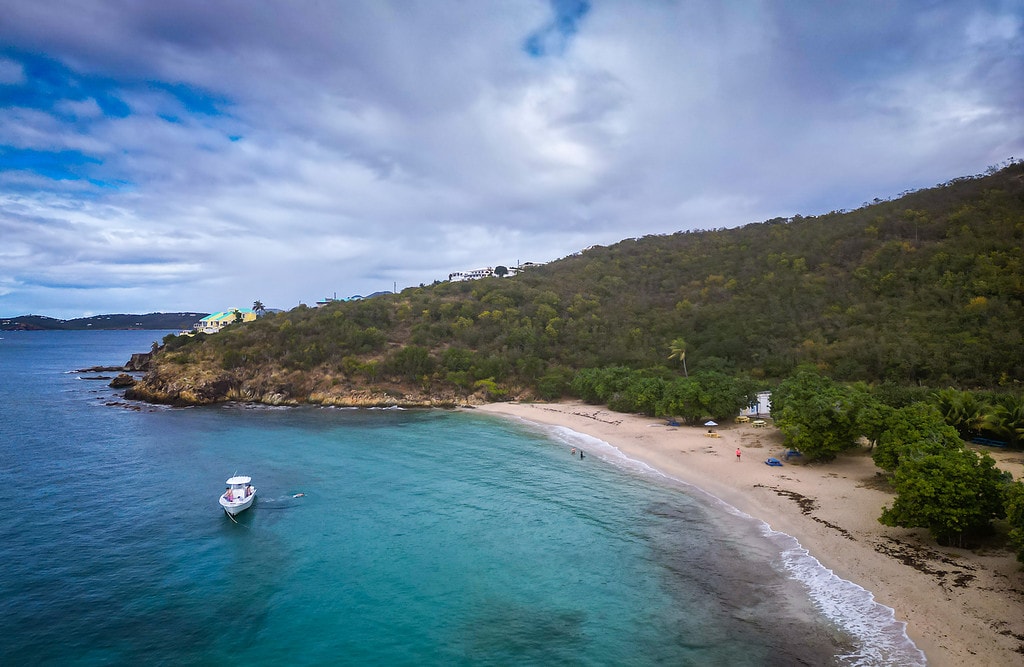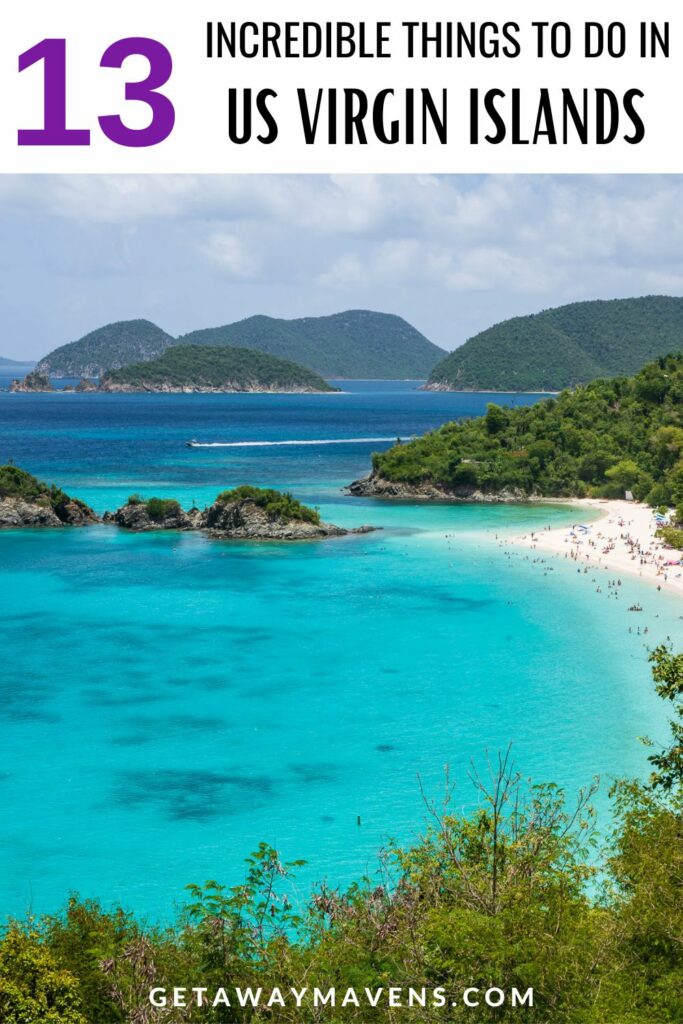Growing up on St. Thomas, one of the four main U.S. Virgin Islands in the West Indies, I had the chance to explore every nook and cranny of the island. Later, returning as a travel writer and on family visits (my parents still live in St. Thomas and Puerto Rico,) I’ve had multiple opportunities to extensively explore these Caribbean islands.
Here are the absolute best things to do in the US Virgin Islands; and for even more inspiration, check out my St. Thomas travel guide. But first, here are answers to frequently asked questions.
Where are the US Virgin Islands?
The U.S. Virgin Islands are a group of Caribbean islands and islets in the Leeward Islands of the Lesser Antilles. Named for Saint Ursula and her 11,000 virgins, the Virgin Islands number about ninety in total – if you count every cay or rock. And while the subset of the US Virgin Islands includes about fifty, there are only four main islands: St. Thomas, St. Croix, St. John, and Water Island.
The U.S. Virgin Islands is a territory of the United States, and as such, U.S. federal law applies there. The capital of the U.S. Virgin Islands is Charlotte Amalie, which is located on the island of Saint Thomas.
The islands are located in the eastern Caribbean Sea, east of Puerto Rico and west of the British Virgin Islands. Specifically, they are about 40-50 miles east of Puerto Rico, to the east of the Greater Antilles, and north of the Leeward Islands.
Geographically, the islands are part of the Virgin Islands archipelago, which also includes the nearby British Virgin Islands as well as several smaller islands and islets.
Do you need a passport for the US Virgin Islands?
Since it’s a U.S. territory, U.S. citizens do not need a passport to travel to the U.S. Virgin Islands from the mainland United States, though a government-issued photo ID is required. However, a passport is necessary if your flight stops in a foreign country, including most Caribbean islands, or if you plan to visit the nearby British Virgin Islands.
Are the US Virgin Islands safe?
Like any tourist destination, the U.S. Virgin Islands experience crime, which can range from petty theft to more serious offenses. As a visitor, it’s important to maintain awareness of your surroundings, especially in less crowded areas and at night. It’s also wise to secure your valuables and not leave your belongings unattended. Do not leave electronics and other valuable items parked in rental cars when headed to the beach.
Natural hazards, such as hurricanes, can also pose risks, particularly during the Atlantic hurricane season which generally runs from June 1 to November 30.
Always wear sunscreen, even on overcast days, and pack bug repellent. Extreme sunburns and mosquito bite reactions are the most common hazards in the tropics.
That said, many people visit the U.S. Virgin Islands each year without incident, enjoying the beautiful beaches, snorkeling, hiking, and other activities the islands have to offer. The U.S. Virgin Islands, like all places, should be approached with a general level of caution and preparedness.
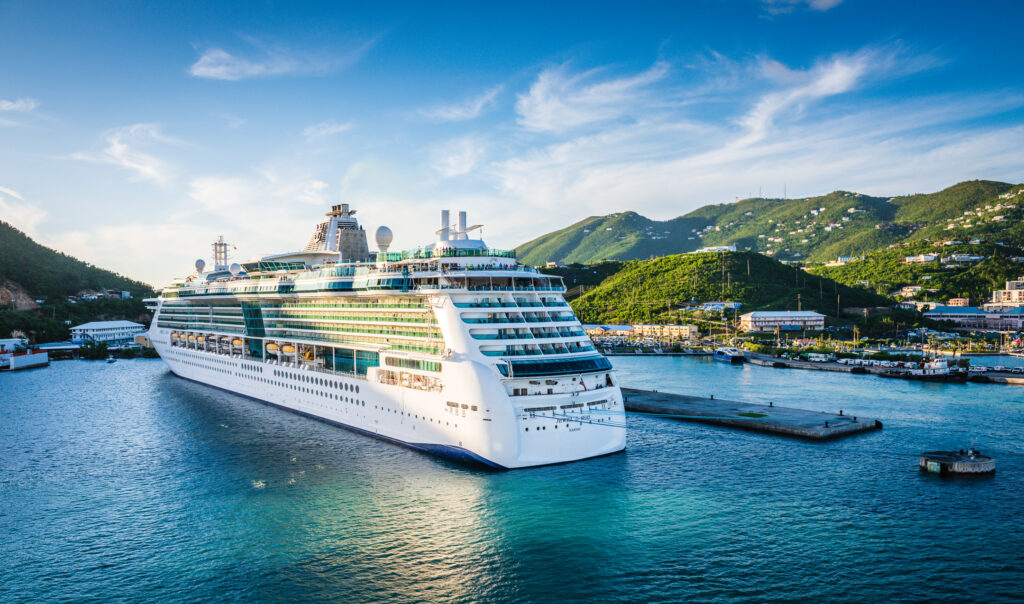
How To Get To The US Virgin Islands?
Traveling to the U.S. Virgin Islands typically involves either flying or taking a boat.
By Air: The most common way to reach the U.S. Virgin Islands is by airplane. There are two main airports in the U.S. Virgin Islands:
- Cyril E. King Airport (STT) on St. Thomas
- Henry E. Rohlsen Airport (STX) on St. Croix
Most visitors will fly into Cyril E. King Airport on St. Thomas, which has the most connections. There are direct flights to this airport from several major cities in the United States, including Miami, Atlanta, New York, and others. Additionally, many international flights will connect through San Juan, Puerto Rico, before heading to the U.S. Virgin Islands.
After landing in St. Thomas, you can take a ferry to St. John. The trip usually takes about 20 minutes from Red Hook, but it can take up to an hour to drive from the airport to the ferry. Note that some St. John hotels provide an exclusive airport lounge and transfers.
By Sea: Several major cruise lines include the U.S. Virgin Islands as a port of call, especially Charlotte Amalie in St. Thomas, which has one of the busiest cruise ports in the Caribbean.
It’s also possible to arrive by private boat or yacht, but there are strict entry and customs regulations that must be adhered to.
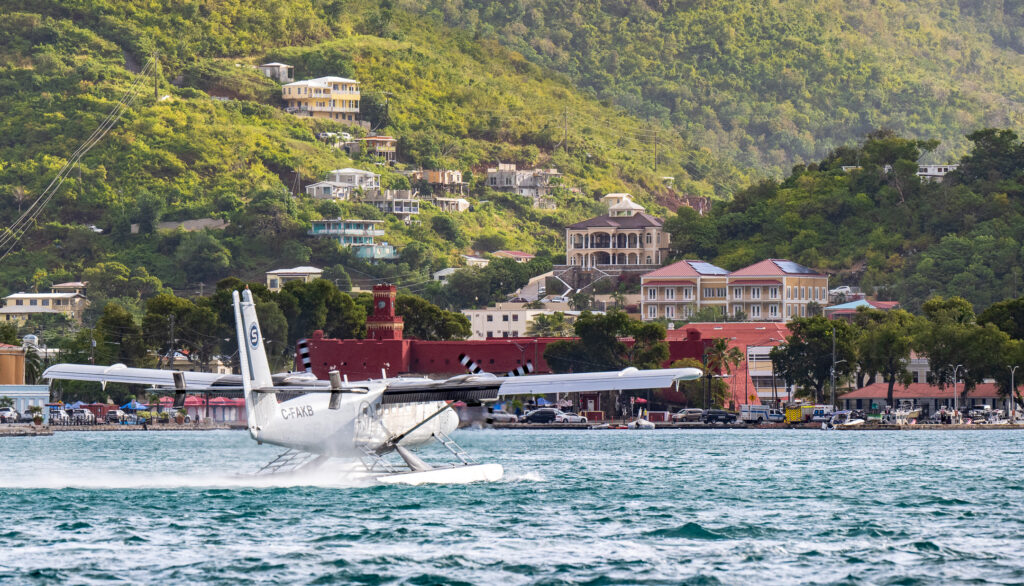
Which airlines fly to the US Virgin Islands?
These airlines include, but are not limited to:
- American Airlines: Direct flights from various U.S. cities, including Miami and Charlotte.
- Delta Airlines: Direct flights from Atlanta and seasonally from other cities.
- United Airlines: Direct flights from cities like Newark and Houston, with seasonal flights from other locations.
- Spirit Airlines: Direct flights from Fort Lauderdale and connecting flights from other cities.
- JetBlue Airways: Direct flights from San Juan, Puerto Rico, Fort Lauderdale, and other cities.
- Frontier Airlines: Offering flights from Miami.
- Cape Air: Providing inter-Caribbean flights.
- Silver Airways: Providing flights from San Juan, Puerto Rico.
- Seaborne Airlines: Providing flights from San Juan, Puerto Rico, and seaplane connections between St. Thomas and St. Croix.
What time is it in the US Virgin Islands?
The U.S. Virgin Islands are on Atlantic Standard Time year-round. They do not observe daylight saving time.
This means that they are 4 hours behind Coordinated Universal Time (UTC-4). When daylight saving time is in effect in the mainland United States, the U.S. Virgin Islands have the same time as Eastern Daylight Time (EDT). When standard time is in effect in the mainland United States, they are an hour ahead of Eastern Standard Time (EST).
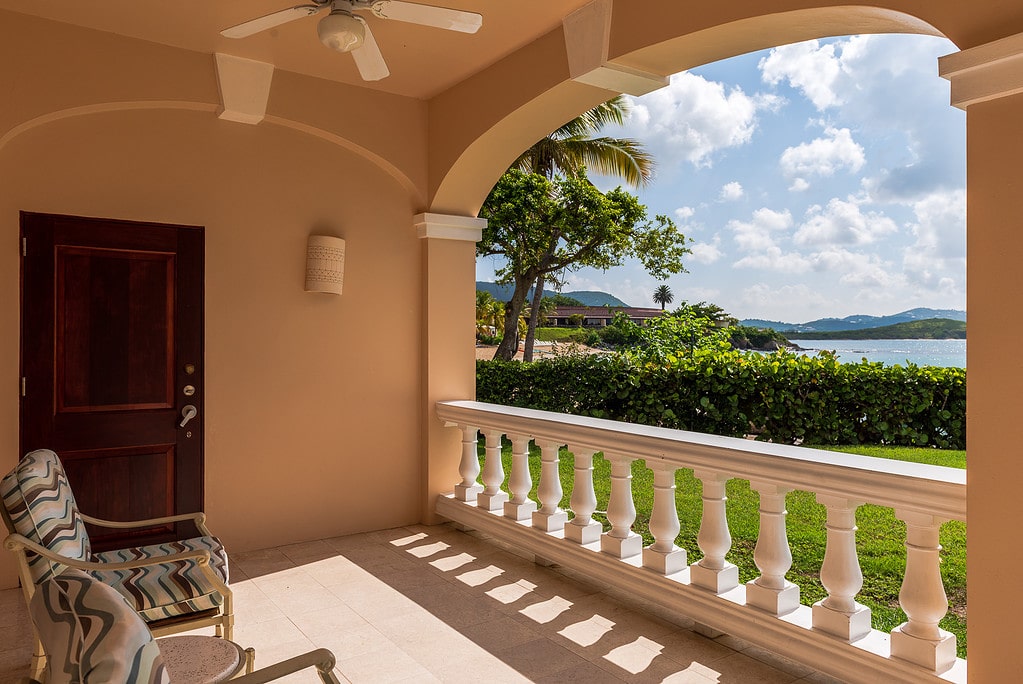
Where to stay in the US Virgin Islands?
The U.S. Virgin Islands offer a variety of accommodations to suit different tastes and budgets. Here are some options on the main islands:
St. Thomas
- The Ritz-Carlton, St. Thomas: This is a luxury resort featuring beautiful rooms, a private beach, multiple dining options, and a full-service spa.
- Secret Harbour Beach Resort: Located on the east end of the island (near St. John Ferry,) this resort offers condo-style accommodations with a beachfront location. It’s a great spot for snorkeling.
- Bolongo Bay Beach Resort: A family-owned resort known for its casual, laid-back vibe and all-inclusive options.
St. John
- Gallows Point Resort: This is a great option if you want to be close to the dining and shopping options in Cruz Bay, the main town on St. John.
- Concordia Eco-Resort: For a more rustic experience, consider these eco-friendly accommodations located on the quieter side of the island.
St. Croix
- The Buccaneer: As one of the longest-running family-owned resorts in the Caribbean, The Buccaneer offers a luxury experience with golf, tennis, and a spa.
- Carambola Beach Resort & Spa: Located on the north shore of the island, this resort offers beachfront access, a dive shop, and a golf course.
- Sand Castle on the Beach: A smaller, more intimate adults-only hotel located in Frederiksted.
From luxury resorts to budget-friendly hotels, villas, and vacation rentals, the U.S. Virgin Islands offer a wide range of accommodations to choose from. As always, the best place to stay depends on your personal preferences, budget, and what you want to do during your vacation.
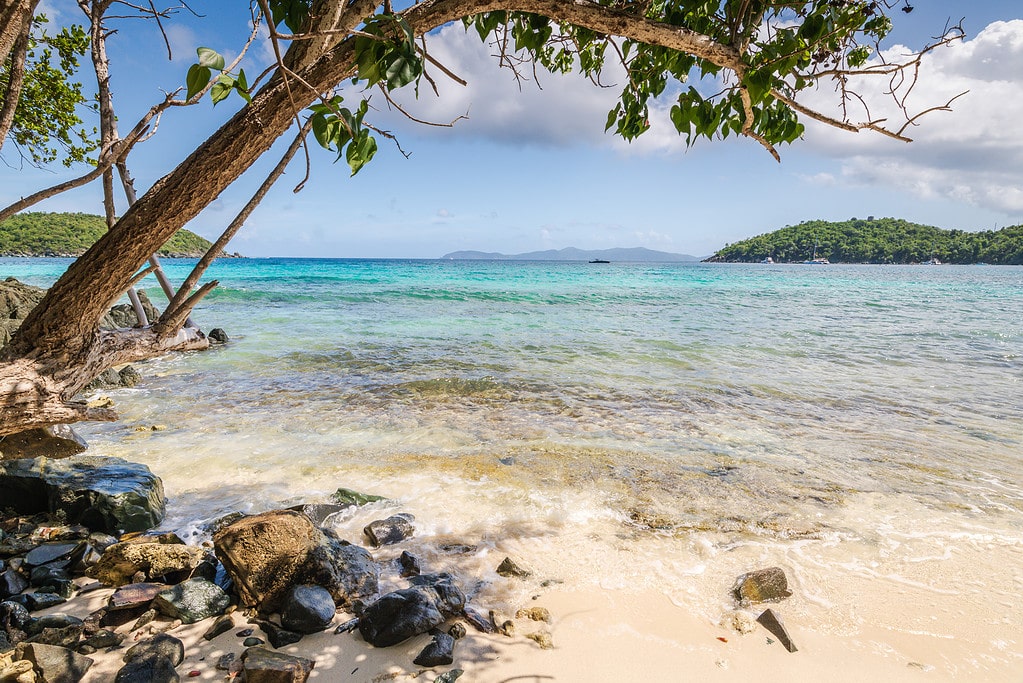
Which US Virgin Island has the best beaches?
All of the U.S. Virgin Islands boast stunning beaches, but here are a few of our favorites. And we list even more in our round-up of the best US Virgin Islands beaches.
St. Thomas
- Magens Bay: Known for its heart-shaped design and calm waters, this beach is ideal for swimming and watersports. It’s often ranked among the world’s best beaches.
- Coki Beach: This beach is great for snorkeling, with clear waters that are home to a variety of colorful fish.
St. John
- Maho Bay: A popular spot for locals and tourists, Maho Bay is a great beach for spotting green sea turtles in the seagrass beds of its shallow waters.
- The seagrass beds in the shallow waters close to the shore often harbor green sea turtles,
- Cinnamon Bay: This beach is less crowded than the very popular Trunk Bay and offers plenty of amenities, including camping facilities.
St. Croix
- Buck Island: Just off the coast of St. Croix, Buck Island has a beautiful beach and is home to an underwater national monument that is a must-see for snorkeling enthusiasts.
- Sandy Point: This two-mile-long beach is a nesting site for leatherback turtles and has been featured in films for its stunning, pristine beauty.
Remember that while all these beaches are beautiful, the “best” beach will depend on your personal preferences and what you’re looking to do (swimming, snorkeling, relaxing, etc.).
Which is the best US Virgin Island?
As a lifelong St. Thomian, I’m partial to my home island, and also to St. John where I often spend my weekends. But for visitors, the “best” U.S. Virgin Island really depends on what you’re looking for in a vacation, as each island offers a unique experience.
St. Thomas sees over a million visitors per year. If you enjoy a mix of natural beauty and modern conveniences, St. Thomas might be the best island for you.
St. Croix, the agricultural center, receives only a fraction of this tourism traffic. It’s known for its rich culture and history, and foodies will appreciate the island’s culinary scene.
Smaller than either, St. John preserves two-thirds of its land for the Virgin Islands National Park, making it the perfect choice for nature lovers. And, at less than 500 acres, Water Island is so small that the main form of transportation is golf carts. This is where to go to get off the grid.
Although azure seas and idyllic white-sand beaches circle all, each of these Caribbean islands offers unique adventures. Ultimately, the best island is the one that aligns with your personal interests and what you want to get out of your visit.
Fortunately, convenient ferries and seaplanes make it easy to island-hop and experience them all.
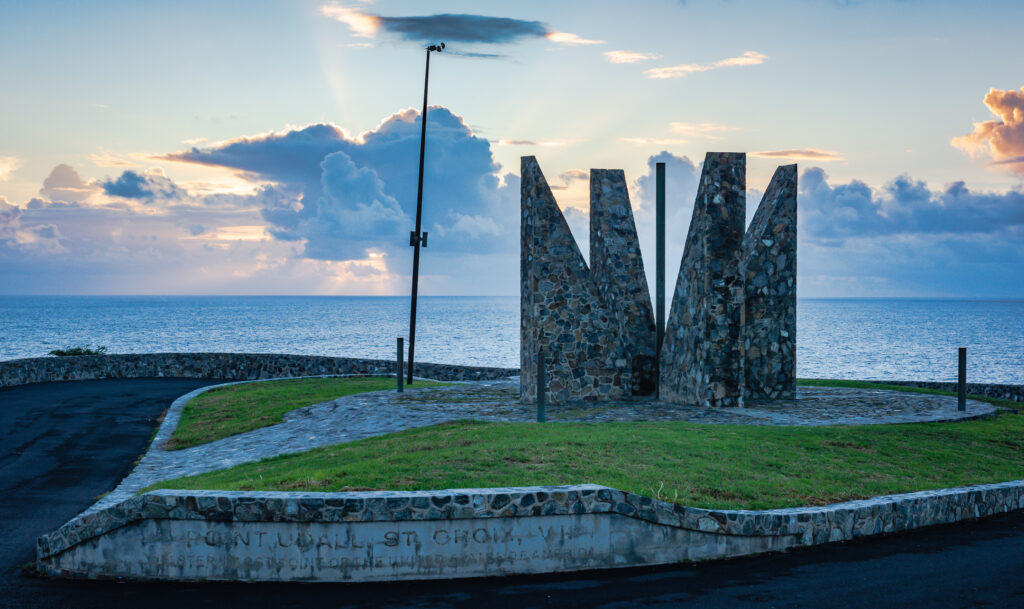
Best Things To Do In The US Virgin Islands
FACE THE SUNRISE AT POINT UDALL – St. Croix
The massive concrete spires of a sundial, labeled the Millennium Monument, mark a panoramic view of the sunrise at the easternmost post in the United States. That early in the morning, Point Udall is usually deserted except for shore birds and the occasional jogger.
Nearby, Cramer Park Beach’s calm and shallow waters is ideal for relaxing. Adventurous travelers will find more rugged beaches on the arid trail that ends at Jack and Isaac Bays.
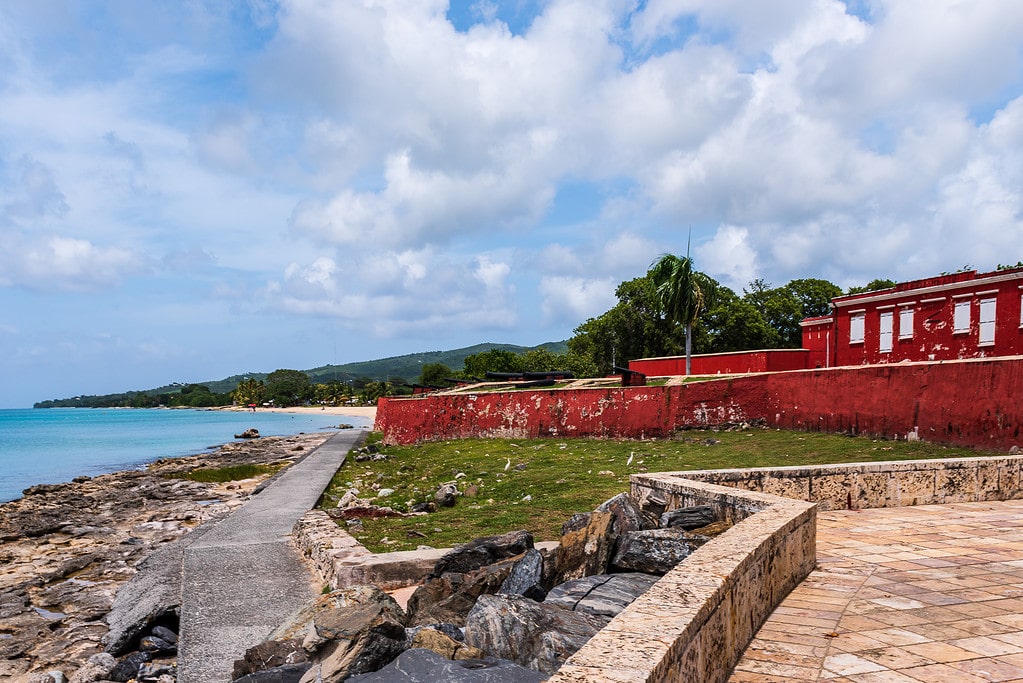
Witness History At Fort Frederik – St. Croix
Generally regarded as the birthplace of emancipation in the US, slavery was abolished in the Virgin Islands (while it was still under Danish rule) on July 3, 1848. This was seventeen years before the brutally bloody American Civil War culminated in the 1865 Emancipation. See the site of the slave revolt that led to the 1848 Emancipation at Fort Frederiksted National Historic Landmark. And learn more about the events leading to this, as well as the aftermath, at either Christiansted National Historic Site on St. Croix or at Fort Christian in St. Thomas.
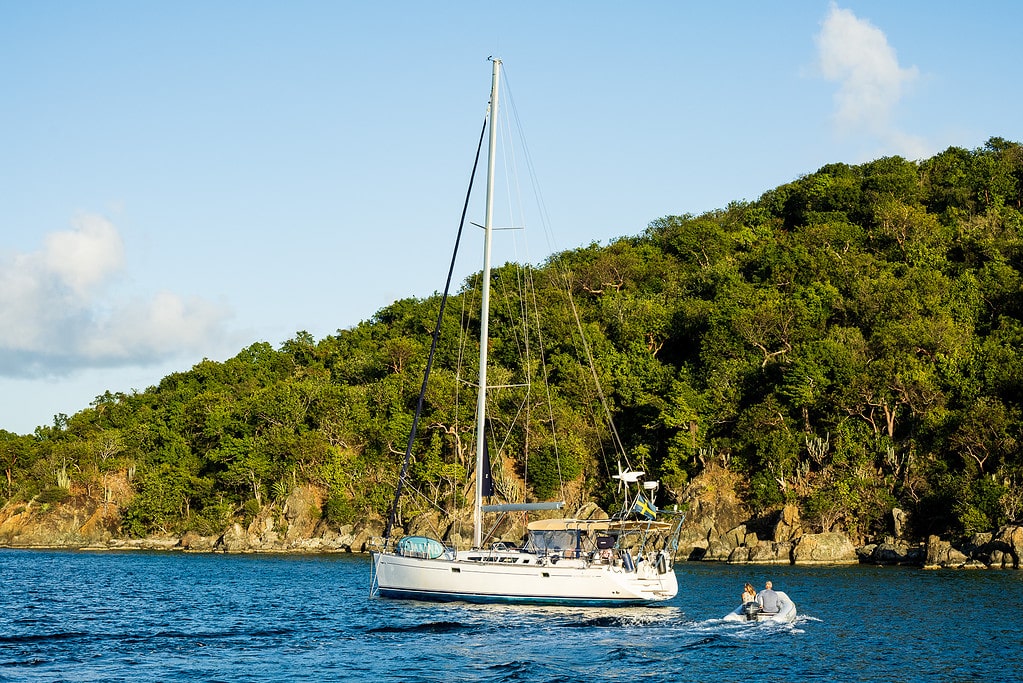
CAPTAIN A CATAMARAN – St. Thomas
Most of the Caribbean is inaccessible, except by boat. And while a dinghy or powerboat might get you where you want to go, there’s nothing quite like the calming motion of a catamaran to shake off stress. And if you’ve never been rocked to sleep by the waves under a starry night, then you’re in for a revelation.
Bitten by the sailing bug on a day trip? Learn how to sail with the Virgin Island Sailing School and you might just see all 90 Virgin Islands. This is experiential learning in practice, with options for group or private lessons, on live-aboard cruises.
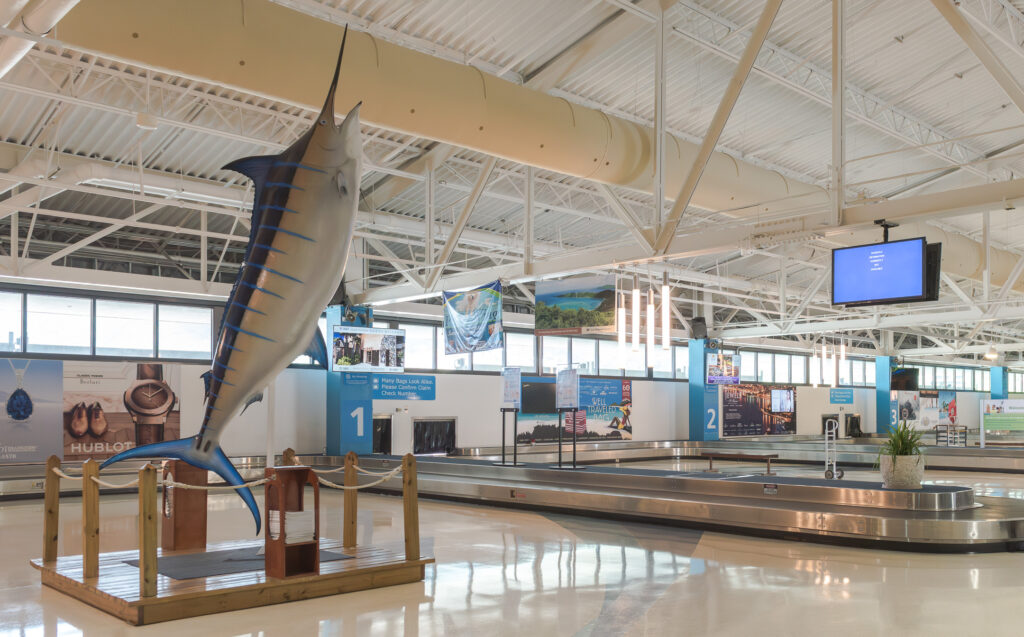
CATCH THE FISH OF THE DAY – All Islands
The Virgin Islands is proud of its reputation as the ‘Blue Marlin Capital of the World.” In case visitors didn’t know this, a behemoth of a giant blue marlin, weighing in at 1282 pounds, greets arrivals in baggage claims at Cyril E. King Airport.
Sportfishing is serious business in the Caribbean, and boat charters depart from several docks on all the main islands. Even the Virgin Islands National Park has open waters where fishing is permitted.
Fishing licenses are required and do check the calendar as there are seasonal limits and times that are more successful. For example, blue marlin fishing is permitted year-round, but it’s best done July through October. There is a daily. 2-lobster limit per person, the same goes for conch, and it’s restricted to October to June.
Whelks, a mollusk used for a stew favored by locals, can only be harvested from October through March. Coincidentally, that’s when winter brings choppy seas increasing difficulty exponentially.
KAYAK THROUGH A MANGROVE LAGOON – St. Thomas
Nature’s nursery, mangroves shelter baby barracuda, crabs, and a wide range of fish. Discover how they protect coral reefs, and vice versa, on a guided kayak tour of the Mangrove Lagoon on St. Thomas’ East End.
Opt for a tour that includes Cas Cay. Hike the volcanic cliffs to find the blowhole and endangered birds such as the white-cheeked pintail ducks, or dive in. The coral reefs, although sparse, are home to, among other marine life, octopuses, spotted rays, juvenile sharks, and schools of damselfish.
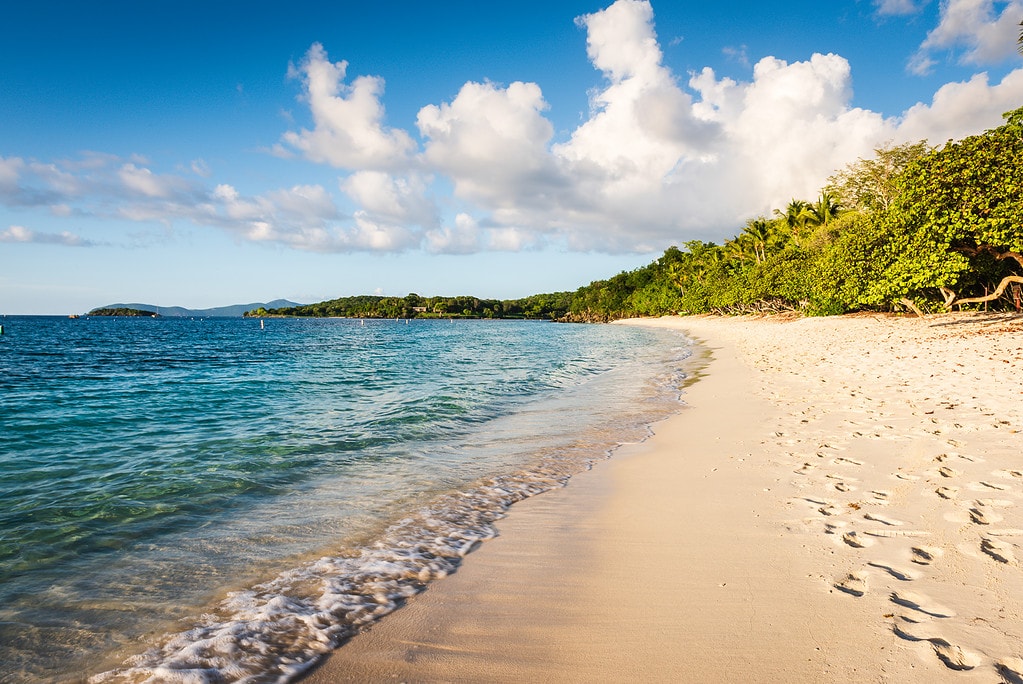
CHILL IN A CABANA AT HONEYMOON BAY – St. John
Be as active as much or as little as you want at Honeymoon Bay. After the mile-long hike in on Link Point Trail, you may be tempted to settle in on one of the plush water floats.
But the beach day pass also includes kayaks, standup paddleboards, and snorkel equipment. The coral reefs at Salomon Bay, to the west, are exceptional.
And Caneel Bay, to the east, is a good place to spot starfish and sea turtles.
Or you can upgrade to the cabana with a freestanding hammock, and switch up lounging spots.
KITEBOARD SECRET SHORES – St. Croix
When can you surf, wakeboard, windsurf, snowboard, paraglide, and skateboard all at the same time? Kiteboarding, an extreme sport that went mainstream in the early aughts, harnesses elements of all these.
Land lessons with Kite St. Croix begin on Kite Beach in Coakley Bay on the east side of the island, but advanced kiteboarders will board a boat to head out to the best riding spots.
SCUBA DIVE SHIPWRECKS – St. Thomas & St. Croix
All of the Virgin Islands offer amazing wreck diving, in addition to magical coral reefs.
St. Croix divers can explore five wrecks at Butler Bay. The two deepest wrecks reach a depth of 108’ at the deepest point. While three shallow wrecks include a prop used in the 1986 film, Dreams of Gold: The Mel Fisher Story.
Just south of the St. Thomas airport runway, lies a former WWII Navy hospital barge, the Miss Opportunity. Although fully intact, the wreck lies upside down at 90’ and tops out at 50’. Advanced divers are guided through rooms and you won’t want to miss the keel which is encrusted with bright corals and sponges.
And, if lucky, you might even meet a critically endangered Atlantic goliath grouper, formerly named the jewfish, that often greets the first divers of the day.
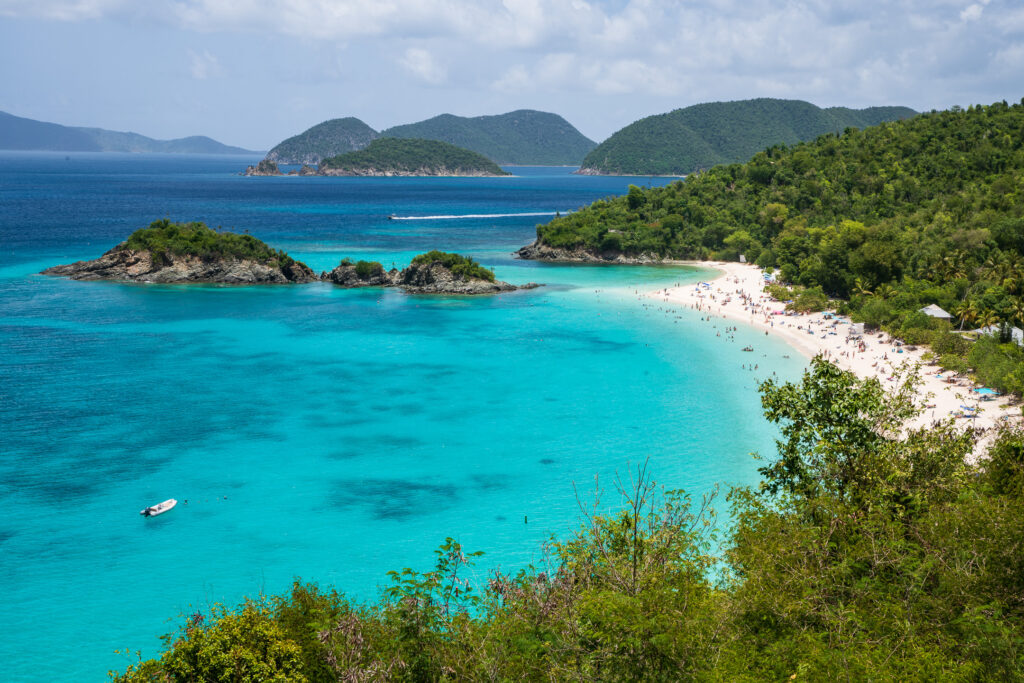
GO ON A JUNGLE HIKE – St. John and St. Thomas
On St. John, the Virgin Islands National Park offers ranger-guided hikes, the most popular being the Reef Bay Trail. Park rangers describe the medicinal uses of the island’s oldest trees and tell the story of the indigenous peoples when sighting the Taino petroglyphs carved into a rock pool.
There are a number of hikes available on St. John, both ranger-led and self-guided. Find these, and more things to do, on the VI National Park website.
St. Thomas offers a few jungle hikes. The 1.8-mile Magens Bay trail passes through tropical forests to end at the mangrove on the beach. But, because parking is severely limited at the trailhead, consider exploring it from the beachside endpoint.
On the west side of the island, the Brewers Bay Cave hike is for advanced hikers only, but the view is killer. And, if you can find it, the 1-mile Santa Maria trail leads to the most secluded beach on the island.
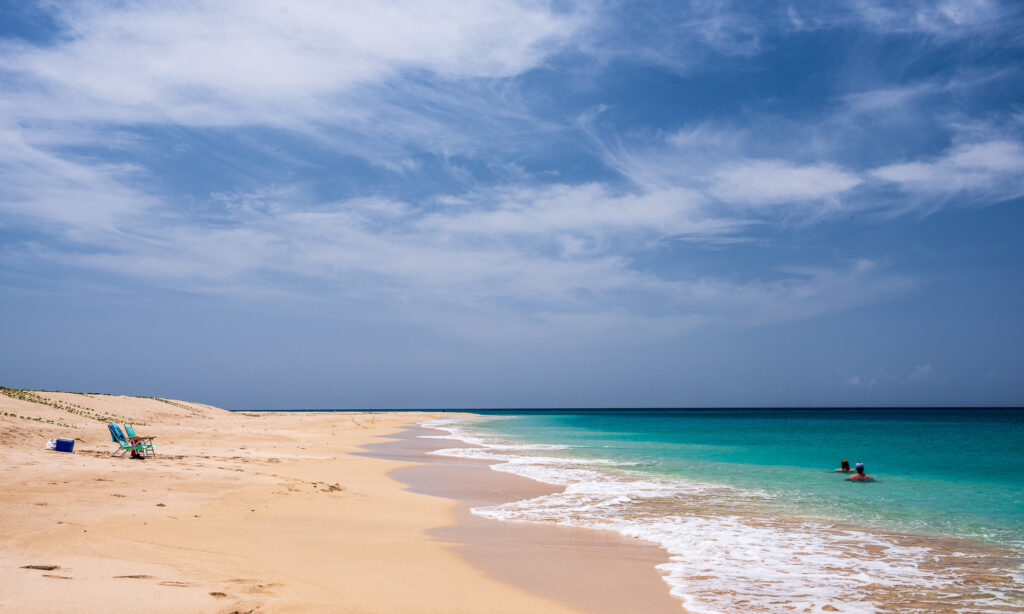
SAVE THE SEA TURTLES – St. Croix
Sea turtles face several threats to their existence, from commercial shrimp trawls to plastics consumption. But the struggle begins even before hatching with the loss of the dark and quiet beaches required to hatch.
In 2021, the final Sandy Point Sea Turtle Nest Count totaled: 98 leatherback turtles, 1,075 green turtles, and 230 hawkbill turtles. That’s thanks to a conservation program that sees Sandy Point – at 3 miles, the longest beach in the US Virgin Islands – closed to the public during sea turtle nesting season, April through August.
Volunteers are invited to help The St. Croix Sea Turtle Project at the National Wildlife Refuge with donations, turtle adoptions, or directly either by surveying nests or protecting emerging hatchings.
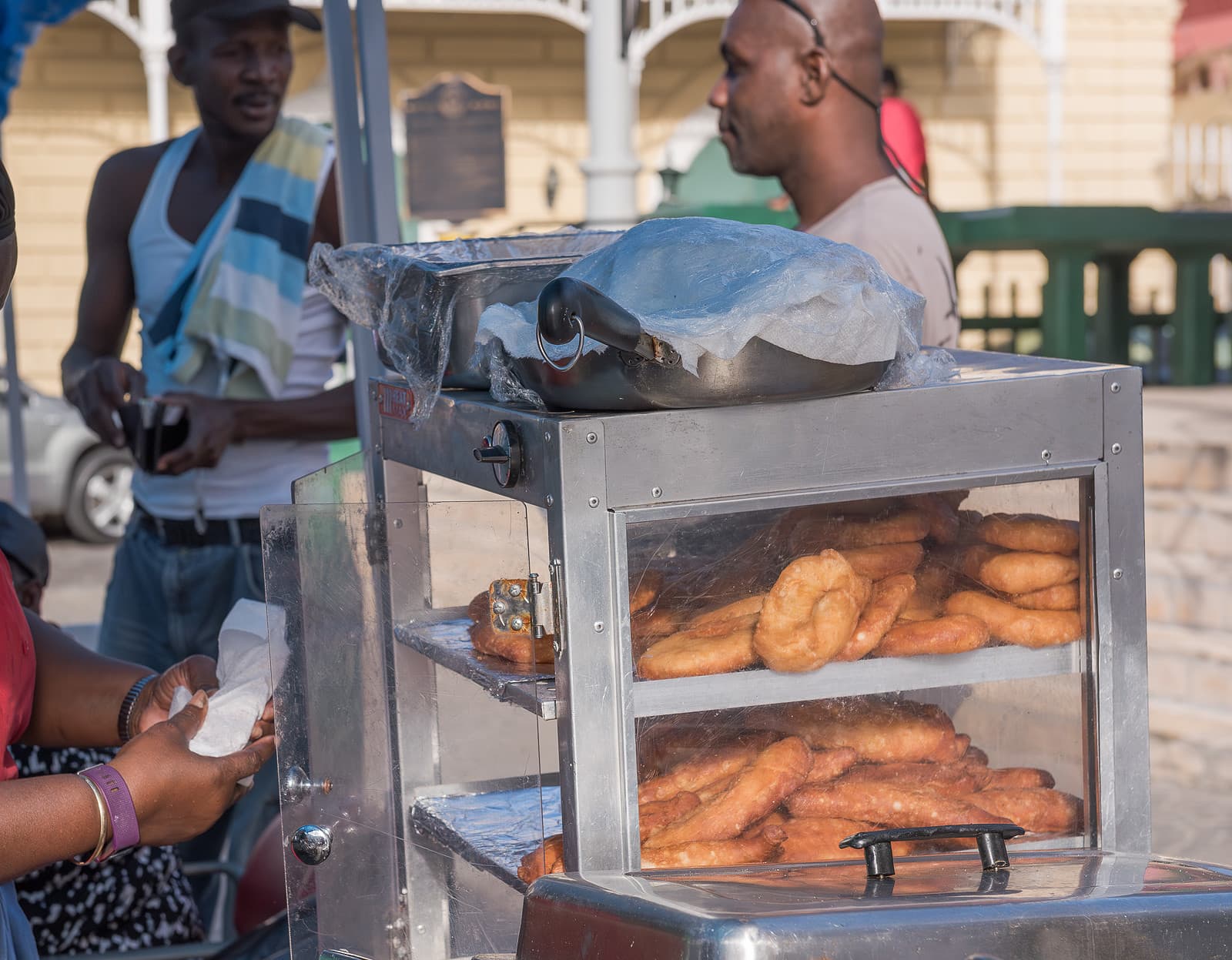
EAT A SALTFISH PATE – All Islands
It may seem surprising to learn that one of the mainstays of the Virgin Islands’ cuisine is saltfish, a salted fish that’s caught and shipped from the North Atlantic.
It’s a legacy of the slave trade where Canadian salted cod was traded for the Caribbean’s rum and molasses.
Virgin Islanders use saltfish in multiple recipes, most notably in the quintessential Virgin Islands dish of Fish and Fungi.
When you’re headed to the beach or on a hike, your best bet is a handheld Saltfish Paté. Highly seasoned saltfish fills a Johnnycake dough wrapping that’s fried to a golden-brown crust.
You can usually find patés with a variety of fillings – including beef, conch, and chicken – at food trucks around the islands. However, the most reliable source is the little ice cream stand next to The Greenhouse Restaurant on the waterfront in downtown Charlotte Amalie.
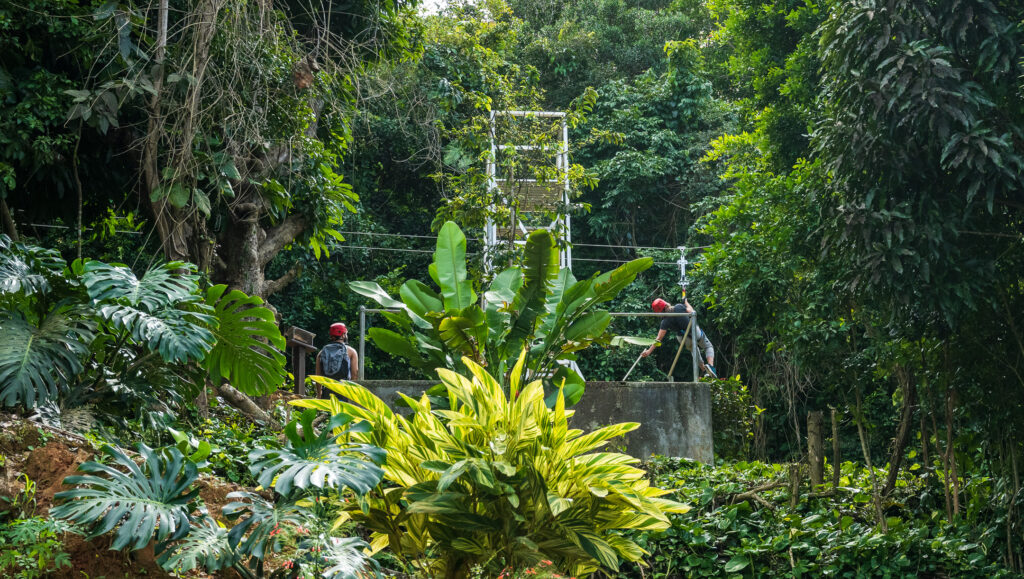
LIMIN’ IN THE TREES – St. Thomas
Limin’, the Virgin Islands’ vernacular for hanging out, might not be top of mind when you climb the steps up to the Tree Limin’ Extreme zipline on St Peter’s Mountain in St. Thomas.
Two sky bridges, and six ziplines – one a yoyo – challenge even the most fearless daredevils. Spot iguanas as you fly over a tropical rainforest canopy and gaze out to views of Magens Bay and the British Virgin Islands…if you’re brave enough to keep your eyes wide open.
Then, when you’ve conquered the course, chill out with a frozen Lime in da Coconut rum concoction served in a real coconut.

LIME OUT IN CORAL BAY – St. John
Explore beaches you can’t get to from the road on a private charter. St. John’s Mermaid Chair postage-sized beach is so small it barely qualifies. But it’s so pretty it’ll win your heart.
Follow up by snorkeling reefs within the Virgin Islands National Park that have never seen a fisherman’s lure or speargun. Teaming with colorful tropical fish and fantastical coral formations, these reefs are straight out of a dream.
End a half-day or full-day sail limin’ on a lily pad at Lime Out, the USVI’s first and only floating taco bar.
Need more Caribbean Getaway inspiration? Check out these blog posts:
- Nassau, Bahamas; Fun In Paradise Island
- St. Barths, French Caribbean Luxe
- Cabrera, Dominican Republic: The Caribbean’s Best-Kept Secret
- It’s Better In the Abaco Islands; The Other Side of the Bahamas
- Travel To Cuba; What You Need To Know
- 7 Unusual Grand Cayman Attractions
All articles belong to Getaway Mavens LLC, and all photos belong to us as well, unless otherwise noted. It’s all copyrighted. Please don’t repost anything elsewhere without asking us first. All rights reserved. This site uses cookies to enhance your experience.
We make no guarantees of any price listed on our site. We’re not responsible for content on external websites linked to ours, including linked resources, an external blog post, any partner site, hotel property sites, or affiliate sites. We only write about places we have vetted, but can’t guarantee that your experience will be exactly the same.
Posts may contain affiliate links at no cost to you. Several of our trips are also compensated by the respective tourism boards for the city or state we are visiting. This never impacts how we share the destination with you – opinions are always our own and we pride ourselves on that. We do not sell links or accept unsolicited guest posts under any circumstances. Don’t even ask.
United States Copyright, Getaway Mavens, LLC

